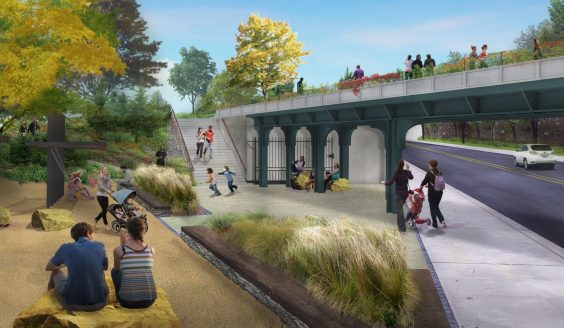Complete a project on-time and on-budget. Or blow deadlines, run into setback after costly setback, only to return to the funding source with outstretched hands.
In the view of the Federal Highway Administration, it makes little difference. Each year this agency hands out roughly $40 billion in highway money based on federal formulas to State DOTs and then, it effectively steps aside — unless additional funding is requested.
Although the federal government provides almost 80 percent of the funding for highway projects across the country, a vast majority are subject to little to no federal oversight, according to ananalysis by Gannett News. And that leads to a lot of waste.
While even the most mundane transit projects like Troy, Michigan’s $8.5 million Amtrak station undergo intense scrutiny by so-called fiscal watchdogs like Mayor Janice Daniels, the classic money-waster — the old, over-budget highway-to-nowhere projects — almost always escapes even the most superficial level of quality assurance.
More than half of federally funded highway projects run over budget, and 45 percent are late, the analysis shows. And whether a state is a consistent top performer or a virtual money pit, the Federal Highway Administration lacks the authority to impose best practices.
FHWA has expanded scrutiny for major projects — those that cost more than $500 million. But this year, just 87 of 136,000 FHWA-funded projects fell into that category.
Cited in the article is an analysis by the American Association of State Highway and Transportation Officials finding that State DOT performance varies wildly, from some budget-faithful all stars like California, Georgia and Texas — that complete 85 percent of projects on target — to an unidentified state agency bringing up the rear at 13 percent.
Here are some of federally financed fiascoes cited by Gannett that have gone completely unpenalized:
• The reconstruction of Westchester County, New York’s Interstate 287 is more than two years behind schedule and $78 million, or 14 percent, over budget. This project has so far has cost taxpayers $621 million, more than $72 million per mile.
• The state of Louisiana’s 36-mile Interstate 49 extension from Shreveport to the Arkansas border was completed for $96 million — 9 percent over budget. The highway abruptly ends at the Arkansas line with no connector planned until at least late 2014.
• Ohio’s US 30 was completed nearly a year late and $13 million — or 13 percent — over budget. The day before groundbreaking, $700,000 was added to the contract because the cost of replacing any wetlands destroyed during construction wasn’t included.
Underscoring the lack of federal oversight is the unfortunate reality that most states do little performance analysis themselves. A report last year by the Government Accountability Office found that 30 states said political support was a key variable in selecting projects. Only 11 states said the same about economic analysis.
AASHTO President Kirk Steudle, also Michigan’s Transportation Director, said he and his fellow state transportation officials oppose greater federal oversight of highway projects out of concern about a “national one-size-fits-all measurement that doesn’t fit all.” Meanwhile, Kenneth Mead, who was inspector general for the U.S. Transportation Department from 1997 to 2006, has been one of the biggest advocates for reform.
“They’re talking about a new surface authorization, and we hear jobs, jobs, jobs,” he said. “But I think there ought to be discipline to this.”
Meanwhile, House Highways and Transit Subcommittee Chairman John Duncan (R-TN) told Gannett reporters he is interested in adding performance measures to the transportation bill currently in progress.






